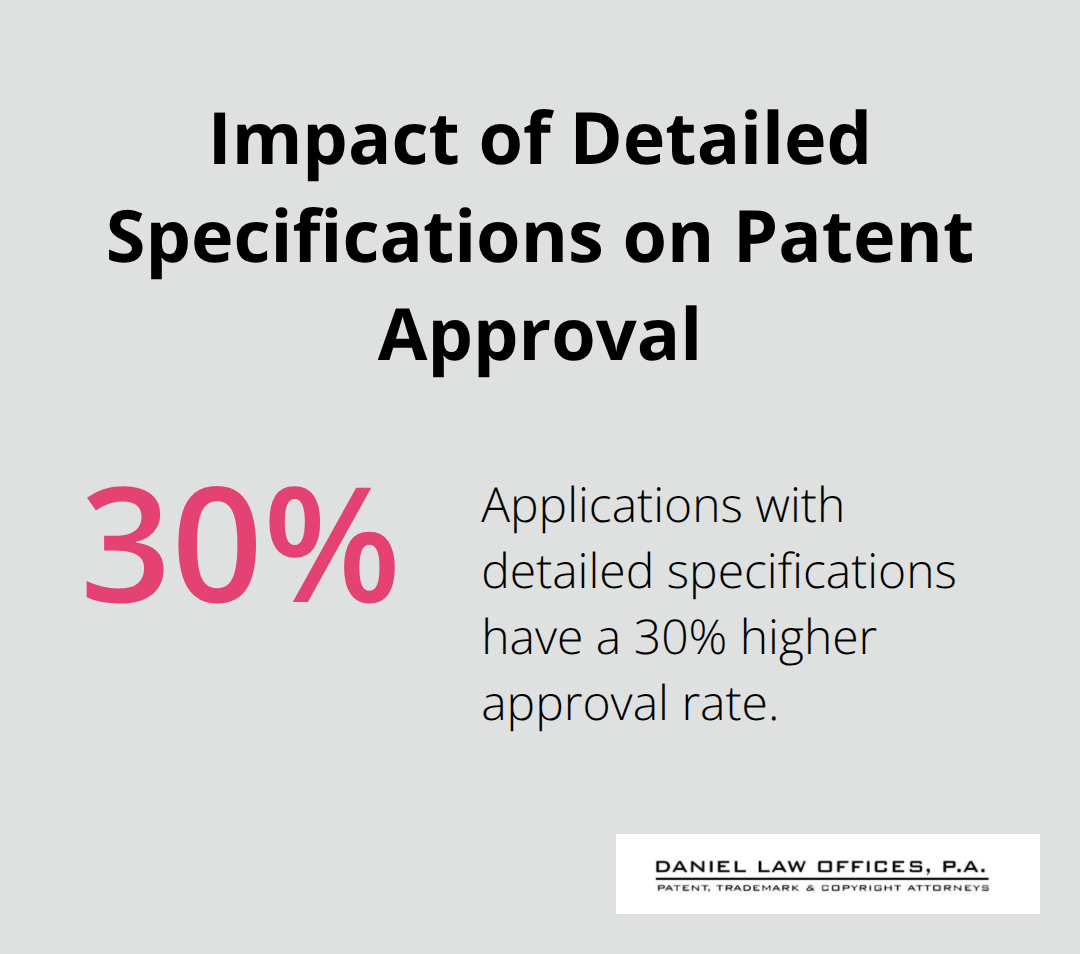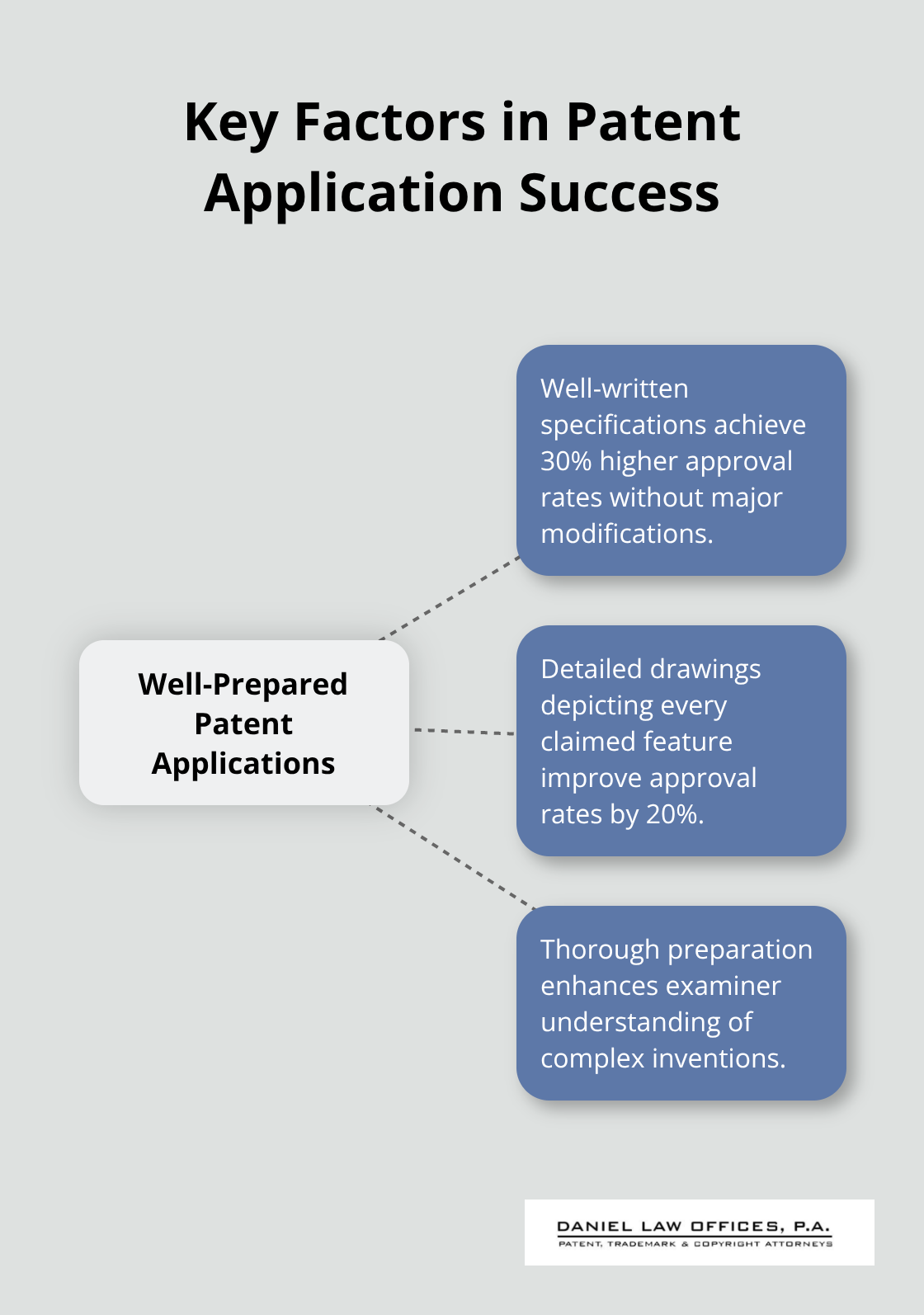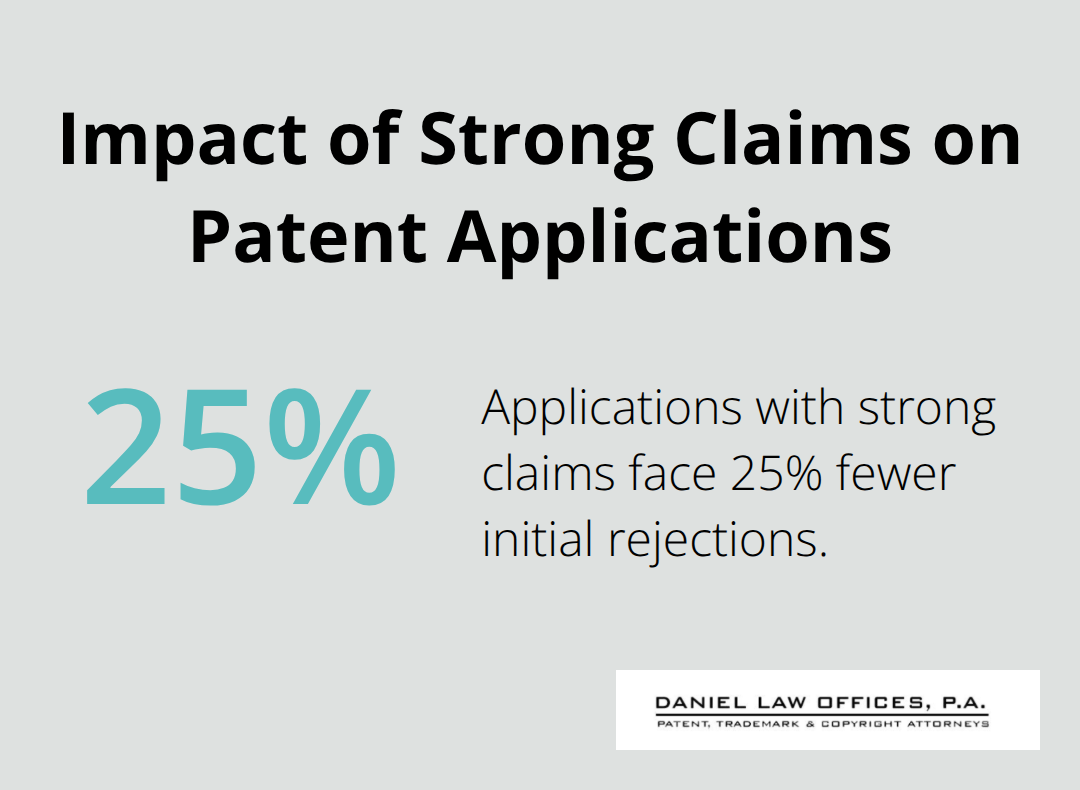Utility Patent Filing in Orlando, Florida [Essential Steps and Tips]
Filing a utility patent protects your invention and gives you exclusive rights for up to 20 years. The USPTO received over 350,000 utility patent applications in 2023, making proper preparation vital for success.
We at Daniel Law Offices, P.A. guide inventors through each step of utility patent filing. Understanding the requirements and avoiding common pitfalls can save you thousands of dollars and months of delays.
Understanding Utility Patents and Filing Requirements
What Makes Your Invention Patent-Eligible
Utility patents protect inventions that are novel, useful, and non-obvious. Your invention must fall into one of four categories: processes, machines, manufactured articles, or compositions of matter. Software inventions qualify when they solve technical problems or improve computer functionality. The USPTO rejects approximately 8% of applications due to lack of novelty, which makes thorough preparation essential.

Applications with detailed specifications achieve a 30% higher approval rate compared to poorly documented submissions.
Filing Requirements and Documentation Standards
The USPTO requires specific documentation for utility patent applications. Your application must include a transmittal form, detailed specification, claims that define your invention’s scope, drawings (if applicable), and an executed oath or declaration. As of January 2024, all specifications must be submitted in DOCX format to avoid a $400 penalty fee. Electronic submission through Patent Center eliminates the $400 non-electronic surcharge. Filing fees vary by entity size: large entities pay $320, small entities $160, and micro entities $80 for basic fees in 2023. Applications with high-quality drawings show 20% better approval rates since visual clarity helps examiners understand your invention’s unique features.
Timeline and Cost Considerations
USPTO examinations typically begin 18 months after submission, with the complete process that extends up to 24 months or longer. Office actions require responses within 3 to 6 months to prevent abandonment. Maintenance fees are due at 3.5, 7.5, and 11.5 years after patent grant to maintain your 20-year protection period. Patent attorneys improve application success rates by 10% through proper guidance and compliance with USPTO requirements. Fixed fee arrangements often cost less than hourly rates at larger firms while they provide predictable budgets for inventors and small businesses.
The next step involves conducting a comprehensive patent search to establish your invention’s novelty before you invest time and resources in the application process.
Essential Steps for Filing Your Utility Patent Application
Conduct a Comprehensive Patent Search
Professional patent searches through the Patent Public Search tool prevent costly rejections and wasted resources. The Orange County Library System helped over 500 local inventors with patent inquiries in 2022, which demonstrates the importance of thorough research. Search databases include issued patents, published applications, and foreign patents to identify similar inventions. Professional searches uncover prior art that amateur searches miss, and this can mean the difference between approval and rejection. Patent attorneys use advanced search techniques and databases that cost thousands of dollars annually (these provide access to comprehensive results that free searches cannot match).
Prepare Your Patent Application Documentation
Your patent application requires precise technical writing that clearly describes every aspect of your invention. The specification must enable someone skilled in your field to reproduce your invention without extensive experimentation. Claims define your protection scope and determine your patent’s commercial value. Applications with well-written specifications achieve 30% higher approval rates without major modifications according to USPTO data. Detailed drawings that depict every claimed feature improve approval rates by 20% and help examiners understand complex inventions.

Each drawing must meet specific margin requirements and numbering standards to avoid immediate rejection.
Submit Through the USPTO Electronic System
Electronic submission through Patent Center eliminates the $400 non-electronic surcharge and speeds processing times. Your application must include a transmittal form, specification in DOCX format, claims, drawings if applicable, and executed oath or declaration. Small entities receive 60% fee discounts while micro entities save 80% on USPTO fees (these savings can reduce costs significantly for individual inventors). Applications that lack required elements receive incomplete notices that must be addressed within specified timeframes to avoid abandonment. Professional assistance during submission prevents formatting errors and compliance issues that cause delays and additional costs.
The next phase focuses on common mistakes that can derail your patent application and cost you valuable time and money.
Common Mistakes to Avoid During the Patent Filing Process
Superficial Patent Searches Create Expensive Rejections
Patent applications fail when inventors skip comprehensive prior art searches or rely on basic Google searches instead of professional database analysis. The USPTO rejects roughly 8% of applications due to lack of novelty, and inadequate searches account for most of these failures. Professional patent searches cost $2,000 to $5,000 upfront but prevent the $10,000 to $20,000 expense of response to rejections or application refiling. Patent attorneys access databases that cost thousands annually and use search strategies that amateur researchers cannot replicate. Free patent search tools miss international filings, pending applications, and non-patent literature that can invalidate your claims during examination.
Imprecise Claims and Weak Specifications Trigger Office Actions
Poor documentation creates immediate problems during USPTO examination and reduces your patent’s commercial value. Applications with strong claims face 25% fewer initial rejections, while vague or overly broad claims often lead to rejections or limited protection.

Patent examiners focus on unique structural features rather than broad concepts, and vague descriptions fail this test consistently. The New Railhead Manufacturing v. Vermeer Manufacturing case demonstrates how insufficient detail in applications leads to unpatentability during litigation. Claims must be clear, concise, and properly balanced between broad protection and specific limitations to avoid examiner rejections.
Missed Deadlines Result in Abandoned Applications
Office actions from USPTO examiners require responses within 3 to 6 months, and missed deadlines abandon your application permanently. Patent prosecution involves multiple correspondence cycles, and each missed deadline costs inventors their filing date and priority rights. Public disclosure of inventions starts a one-year countdown for patent filing (exceeding this period places your invention in the public domain forever). Maintenance fees due at 3.5, 7.5, and 11.5 years after patent grant cannot be extended, and late payments result in patent expiration. Professional patent prosecution prevents these costly mistakes through systematic deadline tracking and timely response preparation.
Final Thoughts
Successful utility patent filing demands thorough preparation, professional documentation, and strict deadline compliance. Applications with comprehensive prior art searches and well-written specifications achieve 30% higher approval rates, while professional assistance improves success odds by 10%. The USPTO’s 18-month examination timeline and mandatory response periods within 3 to 6 months require careful planning and execution.
Patent attorneys in Orlando provide significant advantages for inventors and businesses who need professional guidance. Professional assistance prevents costly mistakes like inadequate searches, poor claim drafts, and missed deadlines that abandon applications permanently. Fixed fee arrangements often cost less than larger firms while they provide predictable budgets and personalized attention throughout the patent prosecution process (this approach benefits individual inventors and small businesses most).
We at Daniel Law Offices, P.A. assist individual inventors and businesses through comprehensive patent searches, application preparation, and USPTO submission guidance. Our registered patent attorney helps clients navigate intellectual property complexities while they protect valuable innovations and brand identity through patents and trademarks. Contact us today to begin the process of securing exclusive rights to your invention and establish a strong foundation for commercial success in the marketplace.

![Utility Patent Filing in Orlando, Florida [Essential Steps and Tips]](https://danielpatents.com/wp-content/uploads/emplibot/Utility-Patent-Filing-in-Orlando_-Florida-_Essential-Steps-and-Tips__1759284543.jpeg)